Clustered Broomrape
Aphyllon franciscanum
Synonym:Orobanche fasciculata var. franciscana
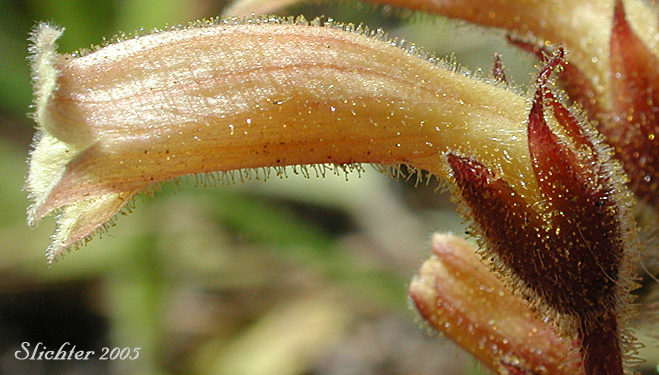
The photo above shows a close-up sideview of the tubular corolla of clustered broomrape as seen at about 4100' on the southeastern slopes of Mt. Adams........June 10, 2005. Note the numerous gland-tipped hairs on both the corolla and calyx.
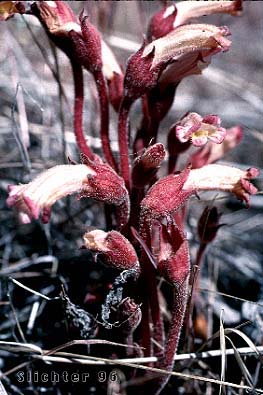 The photo at right shows clustered broomrape as seen at Fort Rock State Park, Fort Rock, OR, late June, 1995. Note the long pedicels which lack bractlets.
The photo at right shows clustered broomrape as seen at Fort Rock State Park, Fort Rock, OR, late June, 1995. Note the long pedicels which lack bractlets.
Characteristics:
Clustered broomrape is a wildflower with solitary to clustered
stems from 5-10 cm long that are buried. The pedicels are erect and extend from
the ground from 7-24 cm high. The herbage is yellowish to reddish-purple (See
photo above.) with glandular hairs. The long pedicels lack bractlets. The plants
entirely lack chlorophyll.
The inflorescence consists of 4-10 flowers The calyx is 8-11
mm long with the tube measuring 4-6 mm long and the short, broadly triangular
and pointed lobes from 3-5 mm long. The corolla isgenerally yellow or light tan and is
18-25 mm long with a curved tube while the corolla lobes are 2-6 mm long. The
anthers are 1.5-2.0 mm long and range from glabrous to woolly.
It is usually parasitic upon Eriogonum sp., Eriophyllum lanatum, and Phacelia sp.. Never parasitic upon Artemisia sp..
Habitat:
Clustered broomrape may be found between the elevations of 1200-3000
meters in dry habitats including those with shadscale, sagebrush, pinyon pine
or juniper.
Range:
Clustered broomrape may be found fro the southern Yukon south
to northern Mexico and east to Alberta and south to Oklahoma, Illinois and Indiana.
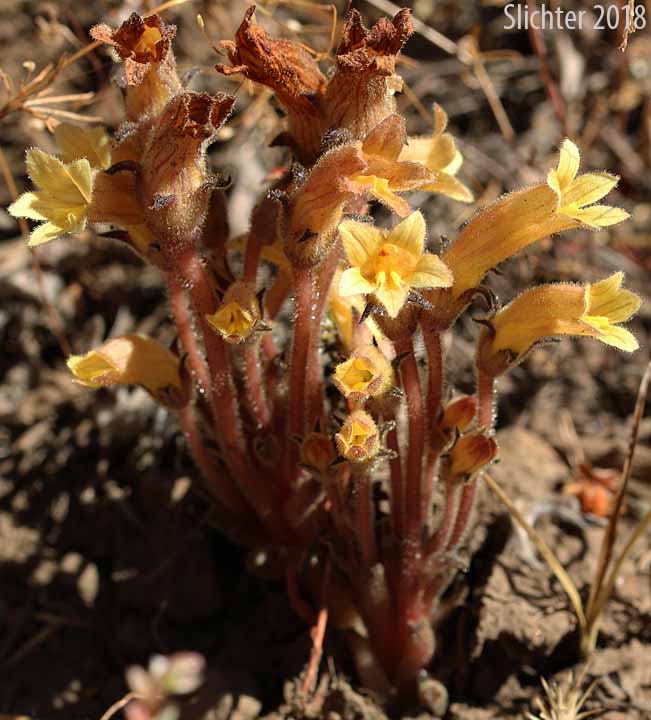
Clustered broomrape blooming along the Tenderfoot Trail #1819 about a half of a mile east of the junction with Trail #1828, Eagle Cap Wilderness......August 12, 2018.
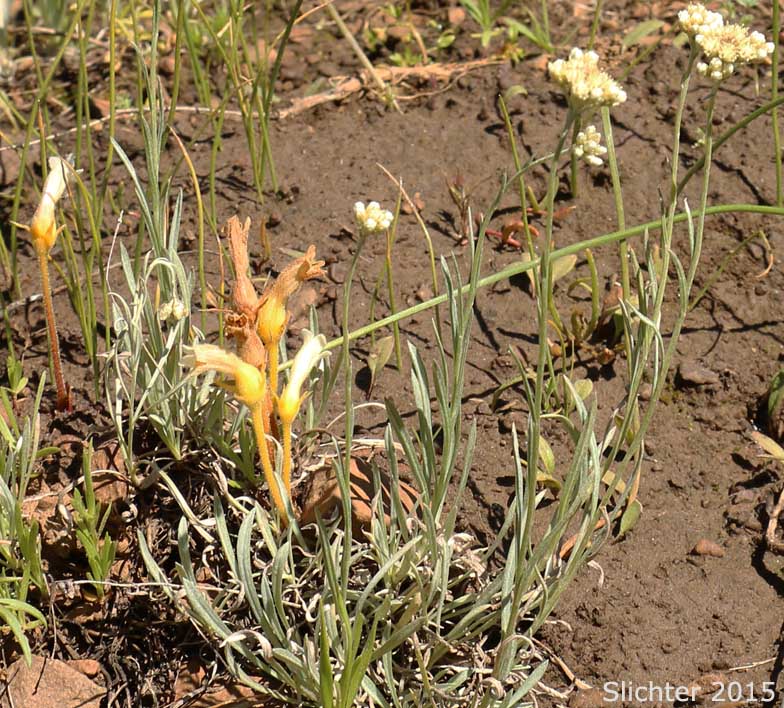 -
- 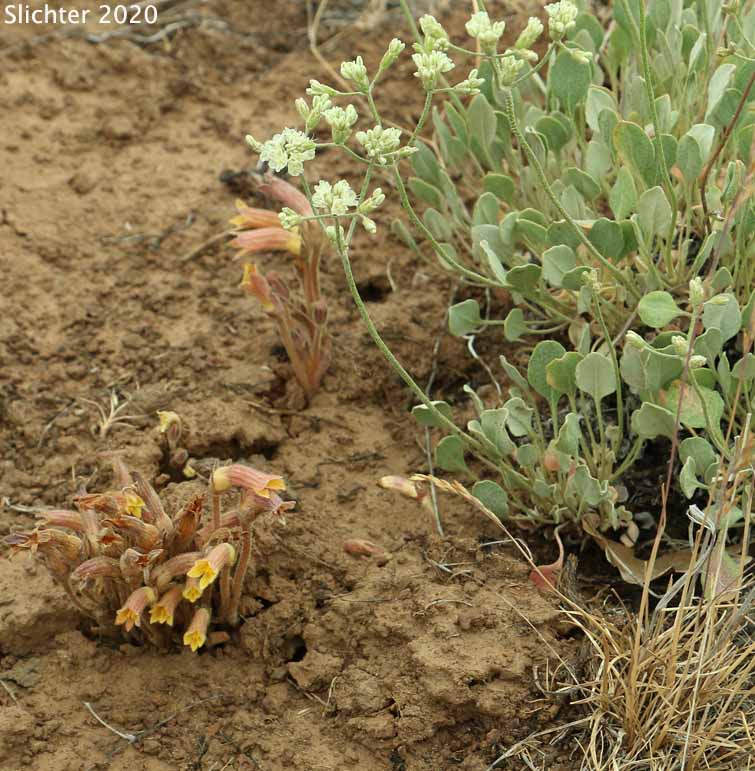
Clustered broomrape as seen at left with woodrush pussytoes (Antennaria luzuloides) along FS Road #2630 on the north edge of Pisgah Meadows, Ochoco National Forest.........June 13, 2015. the photo at right shows clulstered broomrape with strict buckwheat (Eriogonum strictum var. proliferum) and Poa secunda.
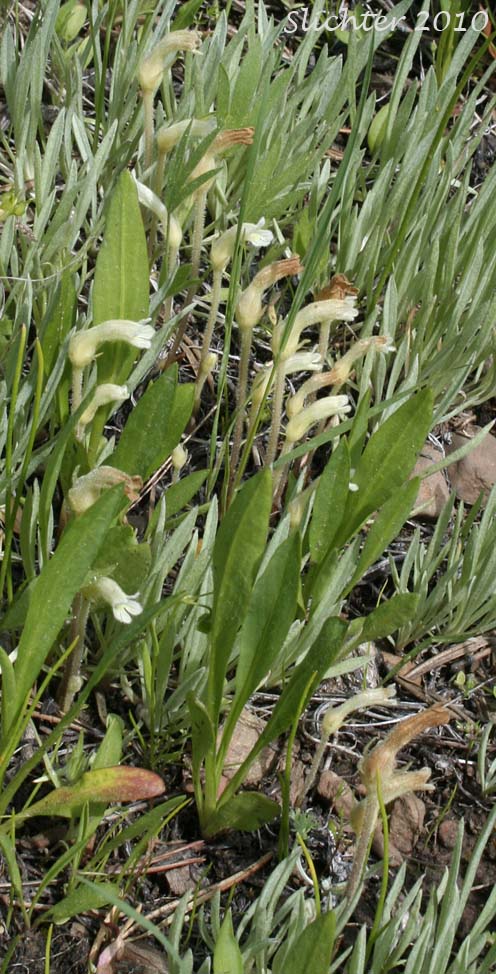
Clustered broomrape growing amidst clusters of pussytoes (Antennaria sp.) in meadows along Bear Creek just west of Forest Service Road #1640, Malheur National Forest........July 1, 2010.
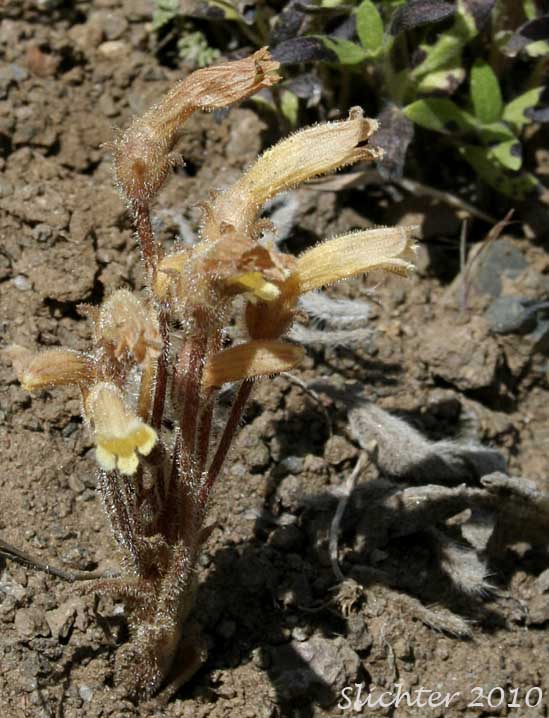 -
- 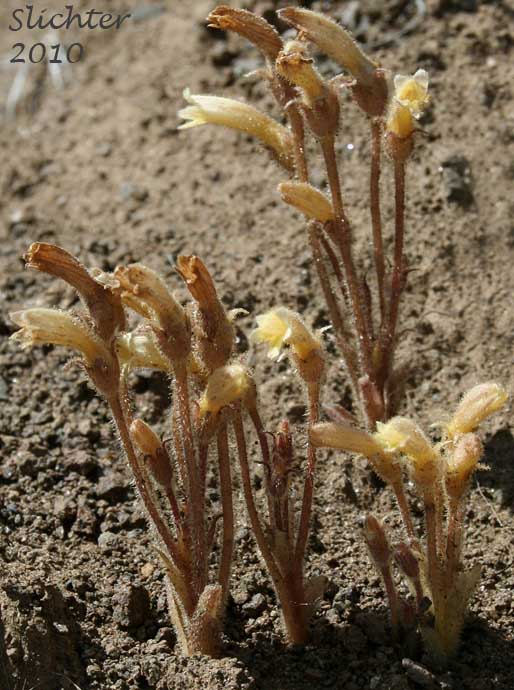
Clustered broomrape growing on road cuts along the Joseph Creek Road, Chief Joseph Wildlife Area, extreme southeastern Washington.........May 24, 2010.
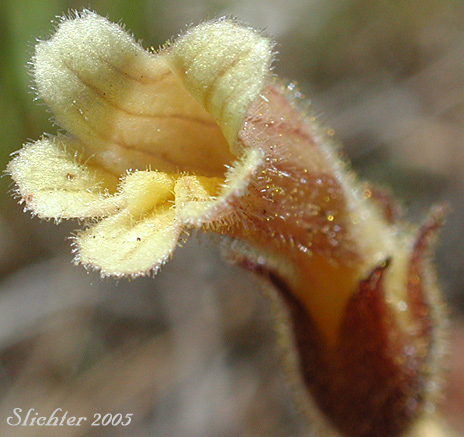 -
- 
The photo above shows a close-up frontal view of the tubular corolla of clustered broomrape as seen at about 4100' on the southeastern slopes of Mt. Adams.........June 10, 2005. Note the numerous hairs on the palate and inner surface of the corolla lobes.
Paul Slichter
 The photo at right shows clustered broomrape as seen at Fort Rock State Park, Fort Rock, OR, late June, 1995. Note the long pedicels which lack bractlets.
The photo at right shows clustered broomrape as seen at Fort Rock State Park, Fort Rock, OR, late June, 1995. Note the long pedicels which lack bractlets.